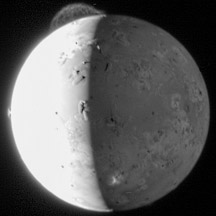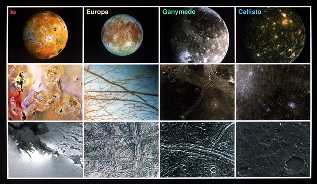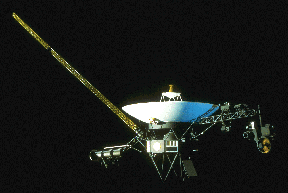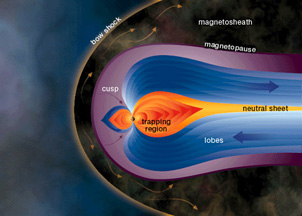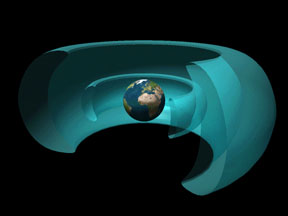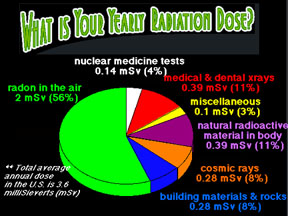Click on image for full size
Image courtesy of NASA/Johns Hopkins University Applied Physics Laboratory/Southwest Research Institute.
The Poles of Io
Io is the innermost of Jupiter's four large Galilean moons. Io is the most volcanically active object in our Solar System. It is no surprise, then, to find some of Io's 400 active volcanoes near the moon's poles. Two volcanoes, Tvashtar and Dazhbog, are close to Io's North Pole.
Both the Galileo and New Horizons spacecraft observed eruptions of the Tvashtar volcano. The Galileo spacecraft spotted a huge lava lake in the volcano's crater and also observed an eruption of a lava "curtain" that was 25 km (16 miles) long and at least a kilometer (three thousand feet) high! During its flyby of Jupiter in 2007, the Pluto-bound New Horizons spacecraft photographed an eruption plume from Tvashtar silhouetted against the edge of Io's disk.
The other volcano near Io's North Pole, Dazhbog, was observed by the Voyager spacecraft and by the Hubble Space Telescope. Dazhbog is named after a god from Slavic mythology. Tvashtar is named after the Hindu god of blacksmiths.
Io has a very thin atmosphere that mainly consists of sulfur compounds erupted from volcanoes. Io orbits Jupiter inside the planet's huge magnetosphere, where radiation particles are trapped within powerful magnetic fields. As radiation showers down onto Io's atmosphere, it causes atmospheric gases to glow. Io has aurora, but the celestial light shows on this strange moon are a bit different from the Northern Lights and Southern Lights we see on Earth. Io does not have a magnetic field to channel aurora-forming radiation particles to its polar regions. Instead, the aurora at Io glow most brightly around the moon's equator!


